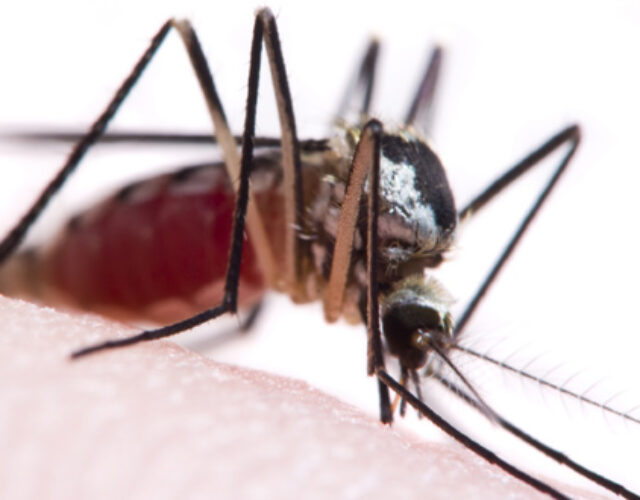Leo B. Slater. War and Disease: Biomedical Research on Malaria in the 20th Century. New Brunswick, NJ: Rutgers University Press, ix + 249 pp, $45.95.
Malaria, a vector-borne infectious disease, is caused by a parasite that is widespread through most tropical and subtropical regions around the world. Hundreds of millions of people are infected with malaria parasites every year and close to three million people die from these infections. Historically, it has been one of our greatest killers, devastating populations, disrupting economic networks, and transforming the ways in which people have interacted with each other.
The disease itself, unlike the protozoan parasite, has been known for millennia and recognized by various civilizations from the Egyptians to the Chinese. The name malaria itself comes from medieval Italian: mal aria, or bad air, a term rooted in the miasmatic theory of disease causation and the general observation that there was a prevalence of this disease around odoriferous wetlands. Not until the late 19th century did Charles Louis Alphonse Laveran, a French physician working in a military hospital, identify the causative agent of malaria, a parasitic organism he named Oscillaria malariae.
Malaria was a scourge to the colonial expansion of the European (and the rising American) powers of the 19th century, inhibiting the exploitation of new places and populations. With the discovery of the mosquito vector of the parasite, research into disease prevention and treatment accelerated at a tremendous rate in order to help secure European (and American) control over new colonies. It was not until the 20th century that new discoveries in chemotherapeutic agents began to significantly affect the care of patients suffering from malaria and consequently the colonial enterprise. Progress in the field of malariology was slow but steady throughout the early part of the 20th century. But during World War II malaria met one of its greatest foes: the burgeoning American biomedical government-industrial-academic research complex.
Leo B. Slater’s book, War and Disease: Biomedical Research on Malaria in the 20th Century, is an excellent historical account of the role that combating malaria played in the scientific and organizational transformations to biomedical research in the United States during primarily World War II.
Slater’s book begins with a prehistory of malaria as a disease and the discovery of one of the most effective treatments against malaria: quinine, a derivative from the bark of the cinchona tree native to South America. From its outset the history of the treatment for malaria was merged with the goals and necessities of a colonial and military context: countries with access to quinine could more easily expand into and conquer the tropical and subtropical regions of the globe. Countries that did not have access to quinine were not willing to accept the morbidity and mortality associated with malaria and soon began to pursue alternative, synthetic chemotherapeutic agents to combat the disease.
The crux of Slater’s book lies in the chemical revolution of the burgeoning pharmaceutical industry in the 20th century. While preliminary work on chemotherapeutic agents started in Germany, owing significantly to the dominance of the German dye industry, American investigators at various institutions around the country began to tackle the treatment of malaria as an important cause for national and international growth. As Slater aptly demonstrates, this required important conceptual transformations regarding the use of model organisms (birds, in the case of malaria), as well as methods of testing new compounds to combat this age-old blight.
Although the establishment of the National Research Council’s chemotherapy initiative in 1939 and work of the Committee on Medical Research in 1941 started to bring the malaria community together in a massive research endeavor, the United States’ plans for both war and malaria were not well organized or well funded. Many of the U.S. government’s programs for antimalarial research developed out of private networks created among research institutions, like the Rockefeller Foundation, and commercial firms, like Parke-Davis.
For Slater these networks are where the central tensions between public and private research were formed. The need to protect the interests of commercial firms, since they were primarily responsible for the development of new drugs, clashed with the government’s need for the production of massive quantities of medications for their troops, who were suffering tremendously in the Pacific. Slater concludes his work with a discussion of the ways in which the new organizational and bureaucratic structures put in place during wartime had both positive and negative impacts on biomedical research in the United States after the war.
Slater has constructed a detailed history of the development of antimalarial compounds in the early to mid-20th century, acknowledging the work of many individuals and institutions in combating this debilitating and often deadly disease. The book is fundamentally layered upon Slater’s familiarity with the subtleties and complexities of the chemical compounds used in preventing and treating malaria, but his well-argued account extends beyond simple chemical history into the realm of institutional history. Many historians of disease have focused their attention on the discovery of the mosquito as a vector for malaria, ignoring the importance of drug development and therapy for malaria prophylaxis and treatment, but Slater’s War and Disease brings such issues to the forefront and puts them within the broader context of wartime necessities in the United States during the 1940s. More important, though, Slater’s work gives us an insight into the modern structure of government-funded biomedical research, its benefits, and its pitfalls.




